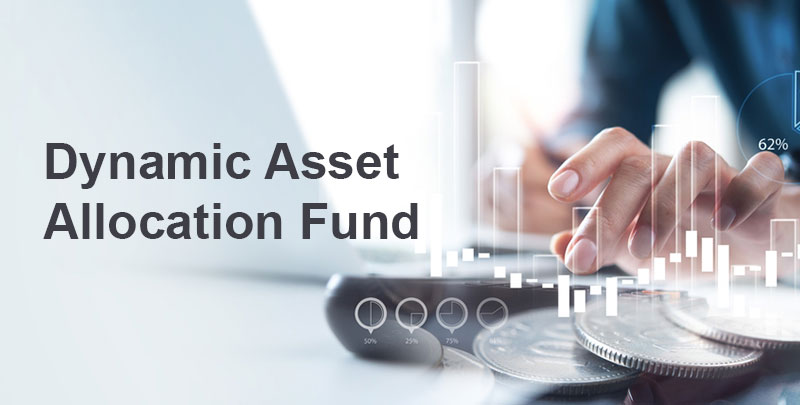Dynamic Asset Allocation Funds are like smart money robots. They move your money around—sometimes in stocks, sometimes in safer places—depending on what’s happening in the world, to try to keep it safe and growing at the same time. These funds can be the way to find the right balance between risk and returns, which is challenging in uncertain markets.
Dynamic Asset Allocation Funds, also known as Balanced Advantage Funds (BAFs), are hybrid Mutual Funds that actively shift between equity and debt based on market trends. This strategy helps cushion you against downturns by reducing exposure to underperforming assets while increasing it in stronger sectors. Ideal for uncertain markets, these funds offer a smart, flexible option; especially if you're seeking consistent returns with limited capital.
Features of Dynamic Asset Allocation Funds
- Active strategy: These funds are not just set and waited upon. They actively adjust the investment mix based on market trends.
- Expert-driven: Professional portfolio managers (sometimes using algorithms) make decisions based on data, trends, and forecasts.
- Diversification: Your money is spread across different asset classes to lower risk from a single sector.
- Flexible allocation: The fund can go heavier on growth (stocks) or safety (bonds/cash) depending on the situation.
How do Dynamic Asset Allocation Funds work?
Dynamic Asset Allocation Funds operate on the principle of adjusting investments in response to changing market conditions. The fund managers actively shift allocations, typically between equity and debt, to manage risk and seize emerging opportunities.
There’s no predefined asset ratio; instead, managers use market data and economic indicators to make timely decisions. For instance, in a bear market, they may increase exposure to fixed-income instruments to limit downside, while in a bullish phase, equity investments may be ramped up to maximise gains.
This flexible, trend-responsive approach aims to outperform benchmarks. However, the fund’s success ultimately depends on the skill and timing of the portfolio manager.
Benefits of investing in Dynamic Asset Allocation Funds
1. Protection during bad times
These funds are built to adapt. If the stock market is falling, they can shift more money into safer assets like bonds or cash. That means your money doesn’t take the full hit when things go south.
2. Growth when conditions are good
When markets rise, the fund can move more into stocks to take advantage of the gains. So you're not missing out on opportunities when the economy is doing well.
3. Stress-free, no guesswork
You don’t need to be a finance nerd or check the news every day. The fund makes decisions for you, based on economic conditions. It’s like having a personal financial advisor built into your investment.
4. Consistency
A lot of people sell in panic when markets fall or get greedy when they rise. These funds are designed to remove emotion and make smart moves automatically.
How to invest in Dynamic Asset Allocation Funds?
- Learn the basics of how these funds work. Know that they shift between stocks, bonds, and other assets to balance risk and return.
- Check various funds' past performances, risk levels, fund manager’s track records and expense ratios.
- You can invest a lump sum (one-time amount) or set up an SIP (Systematic Investment Plan) to invest a small amount monthly.
- Check your investments at regular intervals. These funds are designed for the long term, so no need to panic over short-term moves.
Taxation rules of Dynamic Asset Allocation Funds
Taxation on these funds depends on their equity-debt composition. Funds maintaining at least 65% in equities are classified as Equity Funds and taxed at 12.5% for LTCG (long-term capital gains are held for more than a year) on profits exceeding ₹1.25 lakh annually. Short-term gains (STCG are held for less than a year) are taxed at 20%.
Funds with less than 65% equity allocation are classified as Debt Funds. These funds are taxed according to the investor's tax slab, irrespective of your holding period.
Also Read: Mutual Fund vs. SIP: What’s the difference
Conclusion
A Dynamic Asset Allocation Fund is an intelligent approach to navigating market uncertainties. By adjusting to market conditions, these funds offer a balanced solution for diverse investor profiles. Their flexibility helps manage risks during downturns and capture growth in upswings.
Disclaimer: This article is for information purpose only. The views expressed in this article are personal and do not necessarily constitute the views of Axis Bank Ltd. and its employees. Axis Bank Ltd. and/or the author shall not be responsible for any direct / indirect loss or liability incurred by the reader for taking any financial decisions based on the contents and information. Please consult your financial advisor before making any financial decision.
Mutual Fund investments are subject to market risk, read all scheme related documents carefully. Axis Bank Ltd is acting as an AMFI registered MF Distributor (ARN code: ARN-0019). Purchase of Mutual Funds by Axis Bank’s customer is purely voluntary and not linked to availment of any other facility from the Bank. T&C apply.








